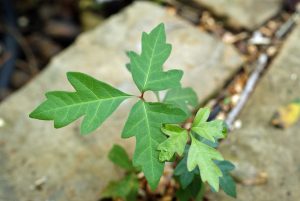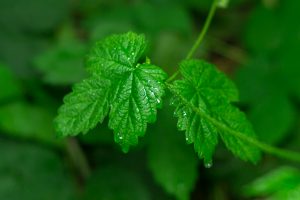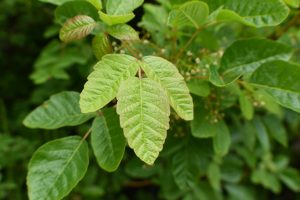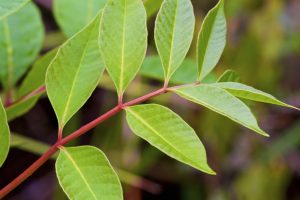Print a Sign-In Sheet | Spanish Version Coming Soon
When working outdoors, employees may encounter poisonous plants, such as poison ivy, poison oak, or poison sumac. The allergic reaction may vary in severity from a mild rash to severe blisters and itching. The natural oil, urushiol, in these plants causes the allergic skin reaction called contact dermatitis.
Anyone who performs work outdoors is at risk for encountering these poisonous plants. Some of the common professions at risk include farmers, landscapers, lawn care workers, utility workers, foresters, and construction workers. If the plants are burned, they may cause irritation and reactions to the lungs because the allergens can be inhaled. Poison ivy, oak, and sumac may be found in multiple areas of the United States except Alaska and Hawaii. Due to the severity of the allergic reaction that may result, it is important to take steps to protect workers.
How to identify poison ivy:
- Usually has three shiny green leaves, but not always depending upon the species.
- May grow on a ropelike hairy vine.
- May have red leaves of three in the fall.
- Could grow in shrub form without a climbing vine.
- May have yellow or green flowers and white to green-yellow or amber berries.
How to identify poison oak:
- Usually has three leaves, but not always depending upon the species.
- Usually is in shrub form.
- May be in vine form.
- May have yellow or green flowers and clusters of green-yellow or white berries.
How to identify poison sumac:
- Typically has clusters of seven-13 leaves.
- Usually is in the form of a woody shrub.
- May have shiny, pale yellow, or cream-colored berries.
Routes of exposure:
- Direct contact with the poisonous plant.
- Indirect contact by touching objects that are contaminated with urushiol.
- Inhalation of particles containing urushiol from burning plants.
Signs and symptoms:
- Red-colored rash on the skin.
- Bumps, patches, streaking, or weeping blisters.
- Swelling.
- Itching.
What to do in the event of contact or allergic reaction:
- Rinse skin with rubbing alcohol, degreasing soap, or poison plant washes.
- Rinse with water.
- Scrub under fingernails with a brush.
- Apply calamine lotion, hydrocortisone cream, or wet compresses to reduce itching and blistering.
- Take an oatmeal bath to reduce itching.
- Take an antihistamine medication to help with itching.
- Consult a medical professional if the allergic reaction is severe or rash is on the face or genitals.
- Contact 911 or visit a local emergency room if the allergic reaction is severe, such as extreme swelling or difficulty breathing, or if the individual had a severe reaction in the past.
How to protect workers:
- Wear long sleeves.
- Wear long pants.
- Wear boots.
- Wear gloves.
- Wash exposed clothing separately in hot water with detergent.
- Apply barrier skin creams.
- Clean all tools after use with rubbing alcohol or soap and water to remove urushiol.
- Avoid burning plants that may be poison ivy, oak, or sumac.
Train employees:
- Risk of exposure to poisonous plants.
- How to identify poisonous plants.
- How to prevent exposure to poisonous plants.
- What they should do if they are exposed.
 |
 |
 |
|
Poison Ivy |
Poison Oak |
Poison Sumac |
KEMI does not assume liability for the content of information contained herein. Safety and health remain your responsibility. This information is to be used for informational purposes only and not intended to be exhaustive or a substitute for proper training, supervision, or manufacturers’ instructions/recommendations. KEMI, by publication of this information, does not assume liability for damage or injury arising from reliance upon it. Compliance with this information is not a guarantee or warranty that you will be in conformity with any laws or regulations nor does it ensure the absolute safety of any person, place or object, including, but not limited to, you, your occupation, employees, customers, or place of business.

